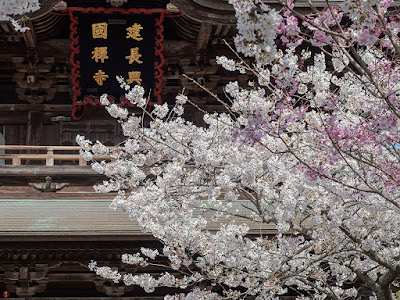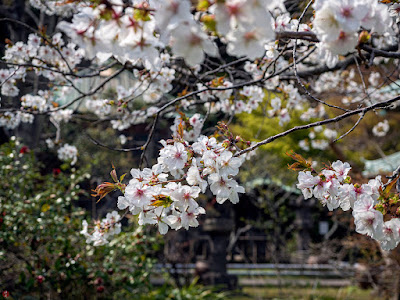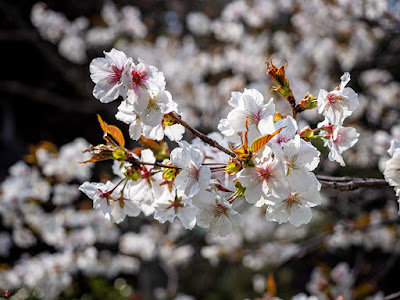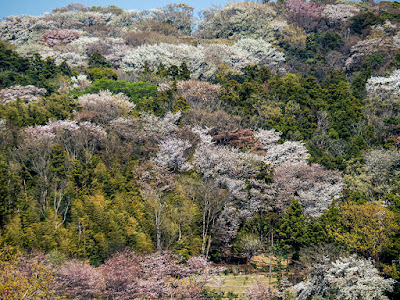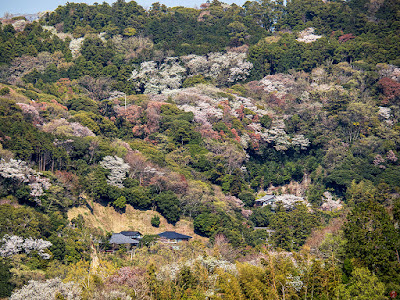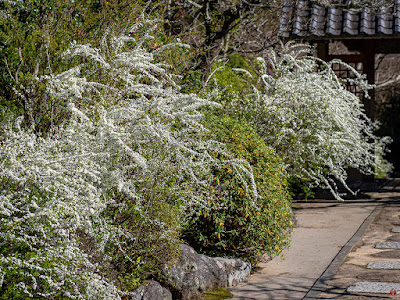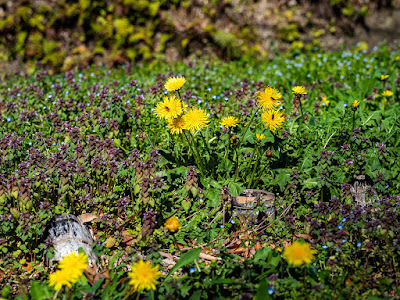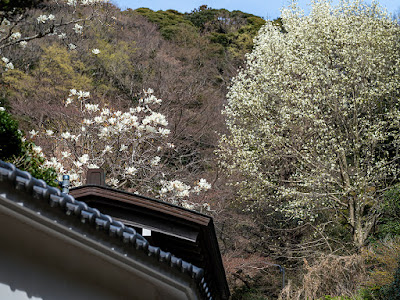In the bright sunlight pouring from the azure sky, the pale pink flowers of Someiyoshino-zakura are in full bloom like rows of brilliant cirrocumulus clouds gently floating above the imperial envoy gate, which indicates that the height of spring has just arrived here again this year.
Someiyoshino-zakura is the most notable and popular cherry tree of Japan and is indigenous to our country. It has been planted as a cultivated variety since the end of the Edo period and the beginning of Meiji era (1868-1912).
Someiyoshino-zakura is said to have been created artificially by the hybridization of the Oshima-zakura (Prunus speciosa) and the Edhigan-zakura (Prunus pendula form. ascendens) by the gardeners and landscapers of Somei Village at that time to model after the Yoshino-zakura (Prunus yedoensis) in Mt. Yoshino.
All the Someiyoshino trees cultivated in Japan are cloned (propagated by cuttings and grafting), which is why their flowers all bloom almost at the same time and scatter simultaneously in a short time.
These cloned cherry trees are unable to make their seeds and so their flowers hardly ever give off the sweet aroma and nectar for calling insects and birds, which means that they never reproduce themselves without human intervention.










